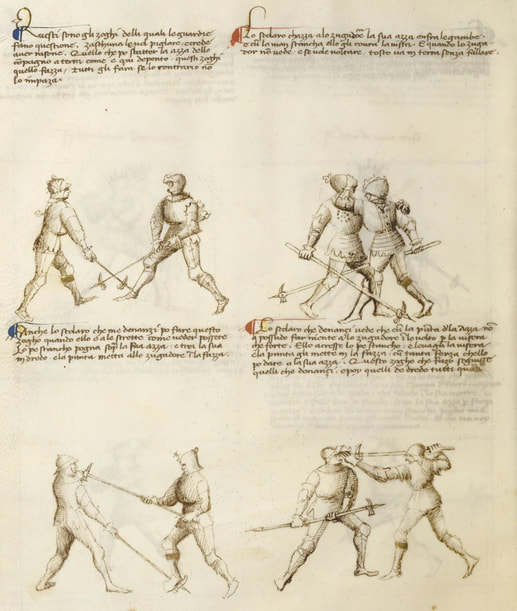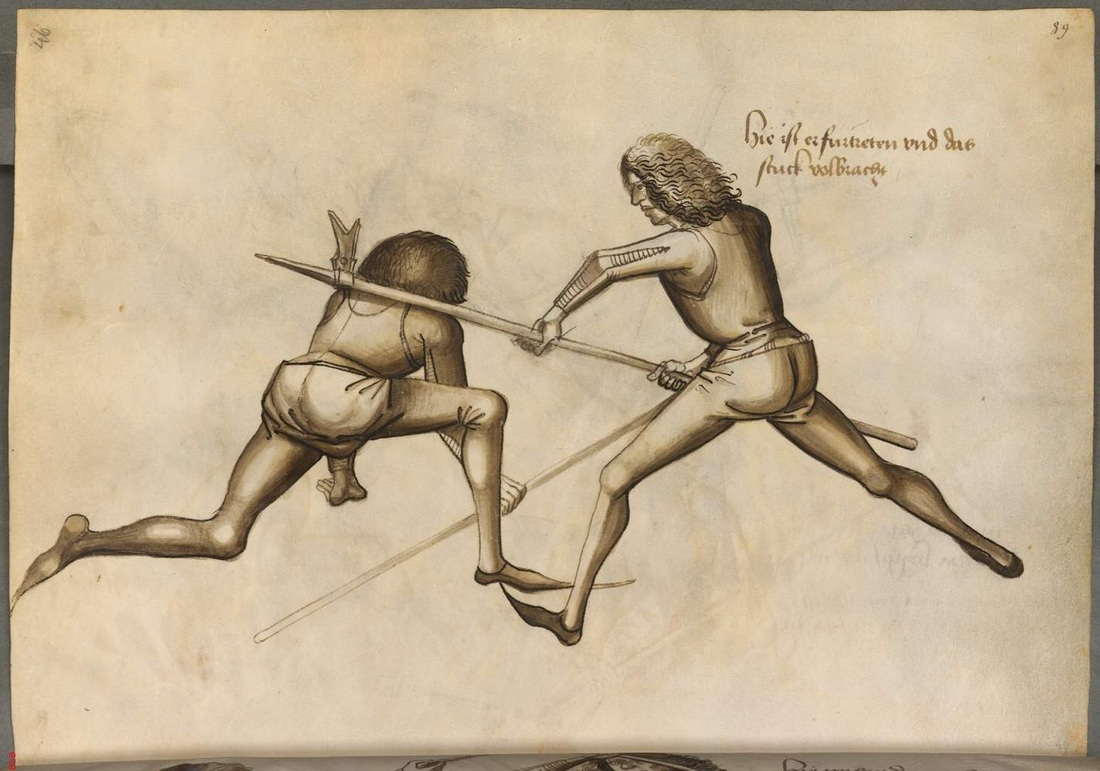THE POLLAXE

Hafted with a wooden queue and fixed with a steel head, the Pollaxe is depicted in many different forms and lengths, ranging between four and seven feet and weighing around 6lbs.
Heads typically consist of an axe or hammer on one side, with a spike on the reverse - however, some feature an axe and hammer combination.
The top is almost always a long thrusting spike, often square in cross-section and tapering to a sharp point much like the Rondel Dagger.
A Pollaxe haft is faceted, having been planed to create anything from a square to an octagonal cross-section, which improves grip and handling.
The head is riveted in place and includes long strips of steel to protect the upper part of the haft, known as langets. Sometimes a rondel guard is featured just below the head, to protect the leading hand from strikes. At the butt of the queue, there is sometimes a second spike, which allows the Pollaxe to be used reversed.
Our key primary sources for the study of the Pollaxe are:
MS Ludwig XV 13: Fior di Battaglia (The Flower of Battle) written by Fiore Furlan dei Liberi c.1409, but with cross-reference to three other surviving versions each containing variations in text, layout and content
Ms.Thott.290.2 (Hans Talhoffer’s Fechtbuch) written in 1459, but with further references to Talhoffer’s other versions of the manuscript



Find medieval combat sources and much more by visiting the excellent Wiktenauer HEMA resource portal